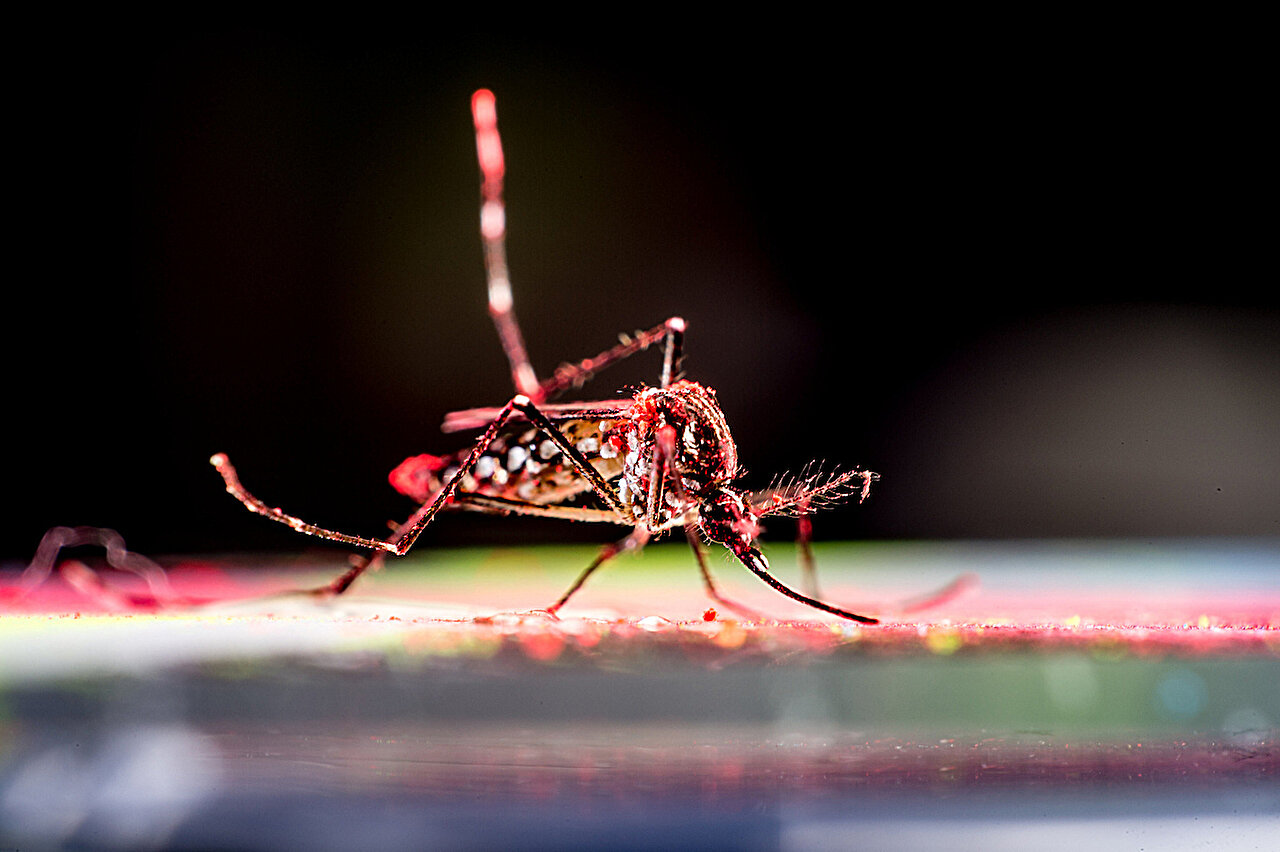The symptoms often strike without warning: a sudden fever, followed by intense, crippling joint pain that can linger for weeks or even months. For many, the chikungunya virus is not fatal, but its effects can be devastating. Newborns, older adults, and those with weakened immune systems are particularly vulnerable to the debilitating consequences of this mosquito-borne disease.
First identified in the 1950s, chikungunya has quietly become a global health concern. Once primarily confined to tropical and subtropical regions such as Asia, Africa, and South America, the virus has increasingly made its presence known far beyond its original boundaries. Today, outbreaks are being reported in places where the disease was once unheard of, raising alarms among public health officials worldwide.
A Global Health Concern
In recent years, chikungunya has demonstrated its ability to spread across continents. Europe has reported multiple infections, and in September, health officials in Long Island, New York confirmed a case—proof that the virus is no longer just a concern of distant lands.
These outbreaks have prompted the Centers for Disease Control and Prevention to issue health notices for travelers heading to Bangladesh, Cuba, Kenya, Madagascar, Somalia, Sri Lanka, and even Guangdong Province in China, where an “unprecedented” outbreak led to aggressive public health measures. Chinese authorities mandated quarantines, sprayed individuals with mosquito repellent, and treated homes, streets, and public spaces with insecticides in an effort to curb transmission.
Chikungunya’s spread is not just a story of travel—it is a story of globalization, climate shifts, and the persistent challenge of mosquito-borne disease in a connected world.
The Mosquito Connection
At the heart of the problem are two tiny but formidable adversaries: Aedes aegypti and Aedes albopictus, the same mosquito species responsible for transmitting dengue and Zika viruses. These mosquitoes thrive in warm, humid environments, laying their eggs in small collections of water—anything from discarded tires to puddles.
As global temperatures rise and weather patterns shift, the habitats of these mosquitoes are expanding, placing more communities at risk. While climate is often considered the main driver of outbreaks, researchers are finding that the story is more complex.
Unpredictable Outbreaks
Chikungunya is notorious for its unpredictability. One outbreak may affect only a handful of people, while another in a similar environment can sweep through tens of thousands. This lack of consistency has long frustrated public health officials.
A new study published in Science Advances by researchers at the University of Notre Dame sheds light on this puzzle. By reconstructing and analyzing 86 chikungunya outbreaks—the largest comparative dataset of its kind—scientists have begun to see patterns hidden in the apparent chaos.
“Instead of looking at outbreaks in isolation, looking at many, all of which varied in size and severity, allowed us to search for patterns among them,” explained Alexander Meyer, the study’s lead author.
The research showed that while climate factors like temperature and rainfall can help predict where outbreaks are possible, they are far less useful for predicting how severe those outbreaks will be. Instead, local conditions—such as mosquito density, housing quality, and community response—play a much larger role. And sometimes, randomness is simply part of the story.
The Role of Chance
Alex Perkins, senior author of the study, put it plainly: “Chikungunya outbreaks are unpredictable in both size and severity. You can have one outbreak that infects just a few people, and another in a similar setting that infects tens of thousands. That unpredictability is what makes public health planning—and vaccine development—so difficult.”
The role of chance cannot be ignored. One infected traveler might land in a neighborhood with effective mosquito control, limiting transmission. Another might arrive in a community where mosquitoes are plentiful and homes are poorly protected, allowing the virus to spread rapidly.
This randomness is both frustrating and humbling, reminding us that even with advanced science, we cannot fully control the dynamics of disease.
The Vaccine Challenge
Currently, only two vaccines for chikungunya have received regulatory approval. Yet access remains limited, especially in the regions where the virus hits hardest. The irony is stark: the people who most need protection are often the least likely to receive it.
Vaccine development faces a unique challenge. To test a vaccine’s effectiveness, trials need to take place during outbreaks. But because chikungunya outbreaks are unpredictable in timing and severity, planning such trials is enormously difficult. Without accurate forecasts of where and when outbreaks will occur, researchers face delays that slow down progress.
This is why the Notre Dame study matters. By compiling the largest comparative dataset of outbreaks to date, scientists can better anticipate where vaccines should be tested and eventually deployed. More reliable predictions could accelerate vaccine approval and, ultimately, save lives.
Climate Change and Beyond
Much of the discussion about mosquito-borne diseases centers on climate change—and for good reason. Warmer, wetter conditions create ideal habitats for mosquitoes. But this study reminds us that climate is only part of the equation.
Local factors matter deeply. Communities with poor infrastructure, limited access to healthcare, or ineffective mosquito control measures are far more vulnerable. Conversely, targeted interventions—such as eliminating standing water, improving housing quality, and raising public awareness—can significantly reduce risk.
This perspective shifts the narrative from a global problem beyond our control to a set of challenges that can be addressed locally. While climate change sets the stage, human choices and community resilience determine the outcome.
Living With Uncertainty
For communities at risk, the threat of chikungunya is both physical and emotional. The illness itself is painful, but the uncertainty adds another layer of anxiety. Families may not know when or if an outbreak will arrive, or how severe it will be. This uncertainty makes planning difficult, both for individuals and for governments tasked with protecting public health.
The Notre Dame study offers hope—not because it eliminates uncertainty, but because it provides tools to manage it. By better understanding the dynamics of past outbreaks, scientists and policymakers can respond more effectively when new outbreaks occur.
The Human Dimension
Behind every statistic is a human story: the mother unable to care for her child because her joints ache too much to move, the farmer missing weeks of work during planting season, the child recovering from a high fever while their parents worry about long-term effects.
Chikungunya may not make headlines in the same way as Ebola or COVID-19, but for those who endure it, the impact is life-changing. Recognizing these stories reminds us why research and prevention matter—not just to reduce numbers, but to protect lives and livelihoods.
Preparing for the Future
The story of chikungunya is not only about mosquitoes and viruses; it is about how humanity responds to emerging threats. As travel, trade, and climate continue to reshape the world, diseases once considered distant concerns will increasingly appear in new places.
The key lesson is preparedness. Investing in surveillance, strengthening healthcare systems, supporting vaccine development, and empowering communities with knowledge can make the difference between a contained outbreak and a devastating epidemic.
Chikungunya is unpredictable, but it is not unbeatable. By combining global research with local action, we can reduce its impact and safeguard vulnerable populations.
A Call to Awareness
As with all public health challenges, awareness is the first step. Travelers must understand the risks, communities must remain vigilant, and governments must prioritize prevention. At its heart, the fight against chikungunya is not just a battle against a virus—it is a fight for resilience, equity, and the health of future generations.
The story of chikungunya is still being written. Whether it becomes a minor footnote in medical history or a recurring global crisis will depend on the choices we make today.
More information: Alexander D. Meyer et al, Predictability of infectious disease outbreak severity: Chikungunya as a case study, Science Advances (2025). DOI: 10.1126/sciadv.adt5419






